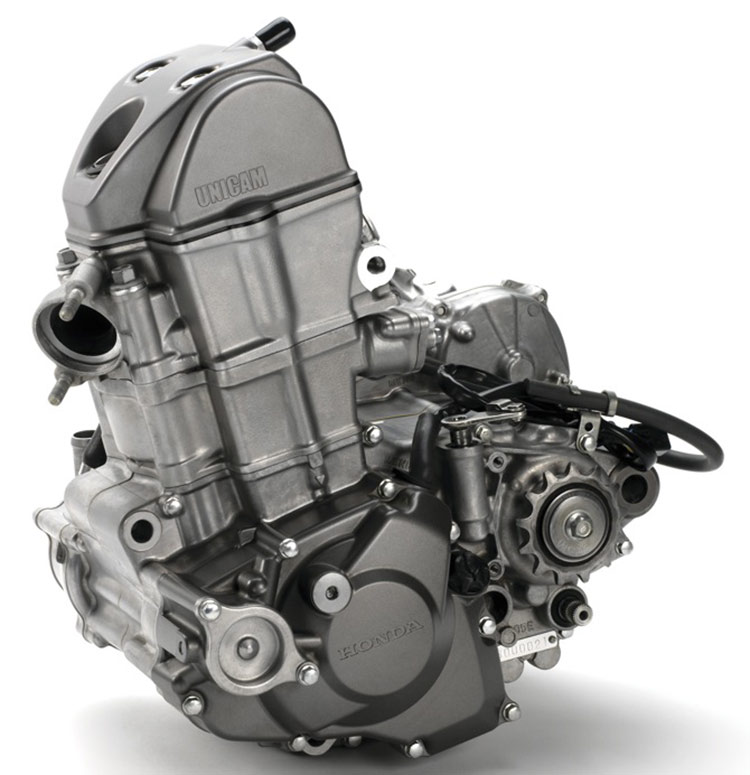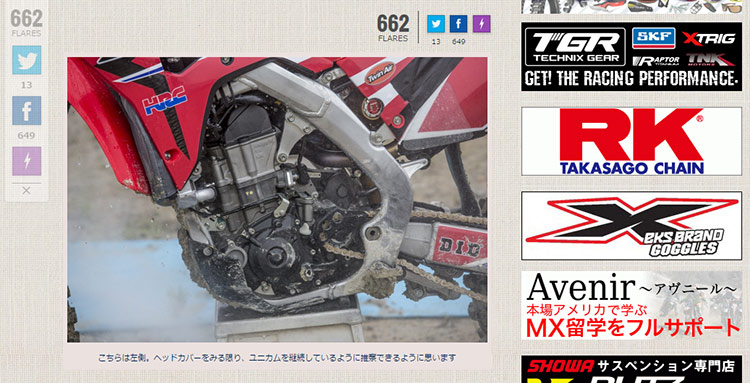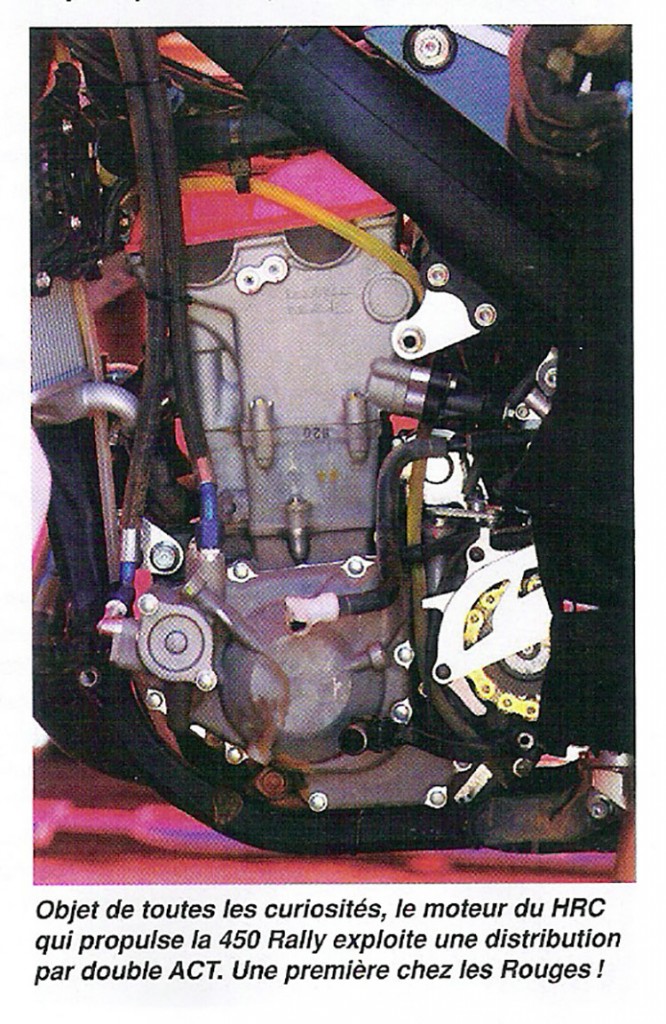What will the 2017 Honda CRF bring to the motocross world?
There has been a lot of speculation on what exactly the 2017 or later Honda CRF450R will be. With various shots of several engine configurations and putting a few pieces of the puzzle together, Dirt Bike Test has some ideas. And it starts with knowing the difference between what a Single Over Head Cam (SOHC) and Double over Head Cam (DOHC) is, which seems to be a big challenge for some other media.

No one at Honda is willing to comment on any of this, stating only they know nothing or that Honda is always testing all sorts of stuff. So all of this is 100% speculation on our part. But the biggest oddity is that most of the prototype stuff has shown up just before the release of the largely unchanged 2016 CRF450R.
The new engine has cases that appear to be much more compact front to rear and the addition of an electric starter as well as a back-up kick starter. But what top-end will end up on the cases seems to be a bit of a mystery. The Dakar HRC machine was pretty secretive about running a DOHC, a clear path to more power in a racing venue that needs as much as possible while still being extremely reliable. Just look at most high-output engines that require performance and the need to last, you will often find two cams. Having valves directly under a cam have less moving parts and easier to quickly activate a valve.
Yet in the 450cc motocross world power this is not always the problem. It is delivery. A SOHC and even Honda’s Unicam design is able to produce winning power; don’t forget the KTM is also a single cam engine. So the above theory does not always hold water with regard to singles.

The advantages and future of the motor choice may be beyond just motocross. If Honda is actually looking at using the engine as a platform for other than motocross, then different configurations can make sense. Electric starting is obvious but then there is the necessary room for a six-speed transmission for off-road or dual-purpose use. And then the cam issue comes into play especially as the displacement goes up. Having two cams allows easier tuning options for things like performance, emissions and sound. Cutting costs across different platforms and using similar parts has proven to be the key to being more profitable. If Honda is dumping R&D money into an all-new motor it would be wise to use that engine in more than just a motocross race bike. KTM has been doing it for years and Yamaha is definitely on that path with its off-road bikes as well.

Some other things that you can gather from close inspection of the MX race CRF is that the gas tank appears to be under the seat on the left hand side. The throttle body is much more of a downdraft design and it is likely that the air box is more where the conventional gas tank would be with air intakes shown near the gas cap. The advantages are in power, weight centralization and noise suppression through additional volume; there is a lot more room in the higher location than back near the shock.
The clutch activation is still by cable but it also appears as if the activation mechanism on the side of the case is its own piece in case the change to hydraulic becomes inevitable.
So what well we see in 2017? That is a bit of a mystery but it likely will not be the same as the 2016. And how does Honda get you into the dealership after having these pictures and information slip out? Well often the best bikes are current and proven packages that have been highly refined. But by telling you that we may be doing the job of the press department…

